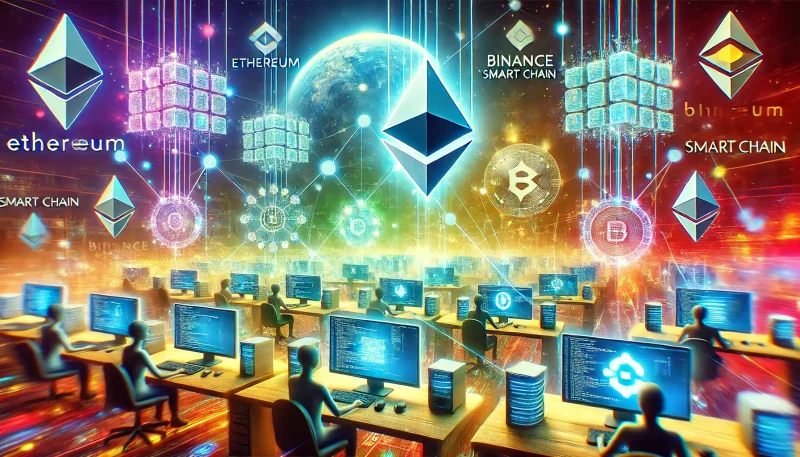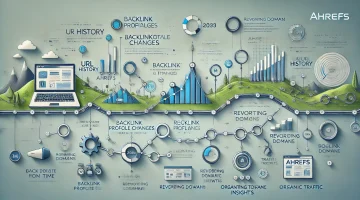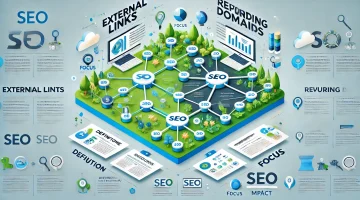
The Best Blockchain for Developers to Earn: A Comprehensive Guide
Blockchain technology has evolved rapidly over the past decade, opening up new opportunities for developers to earn through decentralized applications (dApps), smart contracts, and other blockchain-based innovations. As the ecosystem grows, so too does the diversity of blockchain platforms, each offering unique advantages in terms of scalability, development ease, transaction costs, and rewards.
For developers, choosing the right blockchain can significantly impact their ability to innovate, deploy applications, and earn from their creations. In this article, we explore the best blockchains for developers looking to maximize their earning potential.
1. Ethereum: The Developer’s Choice
Ethereum remains one of the most popular blockchains for developers, largely due to its early adoption of smart contracts and decentralized applications. As the first blockchain to introduce programmable smart contracts, Ethereum boasts the largest developer community and a vast array of tools and resources to assist developers.
Why Ethereum?
Smart Contracts and dApps: Ethereum’s smart contracts are widely used across industries, from finance to gaming, providing developers with diverse earning opportunities.
DeFi and NFT Boom: Ethereum has been at the forefront of decentralized finance (DeFi) and non-fungible tokens (NFTs), both of which offer developers new revenue streams.
Developer Tools and Community: Ethereum has extensive developer support, including frameworks like Truffle and Remix, which simplify development.
Challenges: High gas fees during peak congestion can reduce profit margins for developers.
2. Solana: High Speed and Low Costs
Solana has rapidly gained popularity for its high throughput and low transaction fees. With a focus on scalability, Solana can handle thousands of transactions per second (TPS), making it ideal for developers looking to create applications that require high-speed transactions.
Why Solana?
Low Fees: Developers can deploy dApps and run smart contracts with significantly lower fees than Ethereum.
Fast Transactions: Solana’s scalability makes it an attractive option for applications requiring real-time or frequent transactions.
Developer Grants: Solana offers various grant programs to encourage developer participation, providing an additional earning avenue.
Challenges: Solana is still growing, and its developer community, while expanding, is smaller than that of Ethereum.
3. Binance Smart Chain (BSC): DeFi and Beyond
Binance Smart Chain (BSC) is another attractive option for developers, particularly those focused on decentralized finance (DeFi) applications. BSC is known for its low fees and compatibility with Ethereum, allowing developers to port over Ethereum-based applications with ease.
Why BSC?
Lower Transaction Costs: BSC’s low fees make it a cost-effective option for deploying smart contracts and dApps.
DeFi Focus : BSC is home to many successful DeFi projects, which gives developers access to a large user base and potential for earnings.
Ethereum Compatibility : Developers familiar with Ethereum’s tools can easily migrate or replicate projects on BSC.
Challenges: BSC is more centralized than other blockchains, which may be a concern for developers focused on decentralization.
4. Polkadot: Interoperability and Flexibility
Polkadot is a unique blockchain that focuses on interoperability, allowing different blockchains to communicate with each other. This feature is particularly appealing to developers who want to create cross-chain applications.
Why Polkadot?
Interoperability : Developers can build applications that interact with multiple blockchains, opening up new possibilities for innovation and earning.
Parachains : Polkadot’s Parachain architecture allows for customizable blockchains, giving developers more control over their applications.
Scalability : Polkadot’s design ensures that applications can scale without the congestion issues faced by some other blockchains.
Challenges : Polkadot’s ecosystem is still maturing, so the user base and developer community are smaller compared to more established blockchains.
5. Avalanche: Speed and Scalability
Avalanche is designed for speed and scalability, offering developers the ability to create highly efficient dApps with low transaction costs. Its platform supports Ethereum Virtual Machine (EVM) compatibility, making it easier for Ethereum developers to transition to Avalanche.
Why Avalanche?
High Throughput : Avalanche can process thousands of transactions per second, making it an ideal platform for developers building high-performance applications.
EVM Compatibility : Developers already familiar with Ethereum can easily develop and deploy on Avalanche using the same tools.
Low Fees : Avalanche’s low transaction costs make it an attractive option for developers looking to maximize profits.
Challenges: Avalanche is still competing with other blockchains for market share, so it may not offer as large a user base as Ethereum or BSC.
6. Polygon (Matic): Layer 2 Solution for Ethereum
Polygon is a Layer 2 scaling solution for Ethereum, designed to solve Ethereum’s congestion and high gas fee issues. By using Polygon, developers can build on Ethereum’s ecosystem without facing the high transaction costs.
Why Polygon?
Scalability: Polygon improves Ethereum’s scalability, allowing for faster and cheaper transactions.
Ethereum Compatibility: Developers can use Ethereum’s development tools to create applications on Polygon with minimal adjustments.
Growing Ecosystem: Polygon has seen significant adoption across DeFi, gaming, and NFTs, offering diverse earning opportunities.
Challenges: Since Polygon is a Layer 2 solution, developers are still dependent on Ethereum’s mainnet for finality.
Conclusion
For developers looking to earn from blockchain development, choosing the right platform is critical. Ethereum remains the go-to for many due to its large user base and established ecosystem, while Solana and Binance Smart Chain offer lower fees and faster transaction speeds. Polkadot, Avalanche, and Polygon provide unique advantages in scalability, interoperability, and Ethereum compatibility. Ultimately, the best blockchain for earning depends on the type of application being built, transaction costs, and the platform’s user base.



